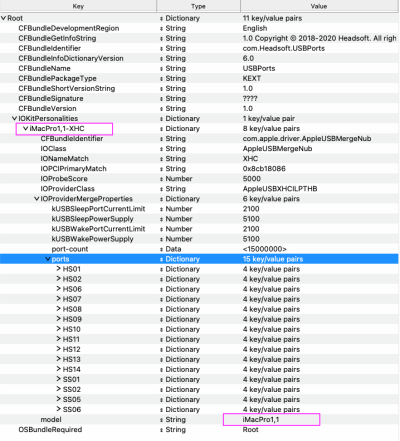Hello, thanx for your help again...
unfortunately setting connector type to internal didn't solve the issue. even the issue got worse. now sometimes after tap on sleep the system reboots.
I was kind of disappointed with this motherboard because I think it isn't compatible with a hack. I tested many ways but none of them worked. I had Asus motherboard but not high end and I didn't have any of this problem. Switching to the Gigabyte board was a big mistake. Even the XMP doesn't work properly to set the ram speed to 3600.
First,
I realize there is a language barrier that may or may not hinder our help being understood but I will reiterate the following information:
1. You have not attached or posted your USB port kext for us to look at and you have not posted a screenprint of your USB port screen from Hackintool after using the INJECT command at the bottom (the syringe) so we can see all of your ports before you have blocked or deleted them.
2. The original USB port kext in the EFI you took off of GitHub has the following ports unblocked with the following designators:
HS04 0,
HS07 0,
HS08 0,
HS09 0.
HS10 0,
HS11 0,
SS01 9,
SS03 3
SS05 3
SS06 3. THIS IS ONLY 10 PORTS OUT OF A MAXIMUM OF 15 which tells me this person does not know what he is doing although it will work with 10, even with the wrong designations, but your rear IO alone, has 14 or 15 ports so no internal ports could be used if all the rear ports are functioning as a choice.
3. XMP is not guaranteed on any manufacturer's boards with chipsets that are not Z5xx rather than B5xx whether it be Asus or Gigabyte (as Edhawk noted) and it also depends on the quality of the brand of ram. Cheap ram usually does not work at XMP speeds, the ram needs a stable/compatible chipset to perform at overclock speeds.
Since we cannot see what you are running in your EFI and You have not posted a screen-print of your Hackintool screen, we can only tell you what ports you have available, not what you may have blocked and designated in your port kext.
4. And finally what do you really need sleep for? Your machine should be fast enough that you really do not need the sleep function which was really made for slow machines in the old days. Using sleep is overrated.

